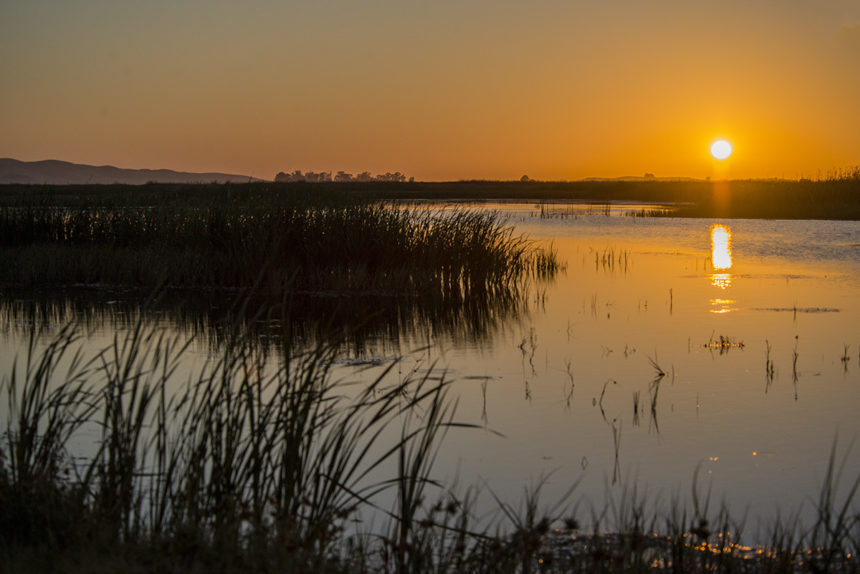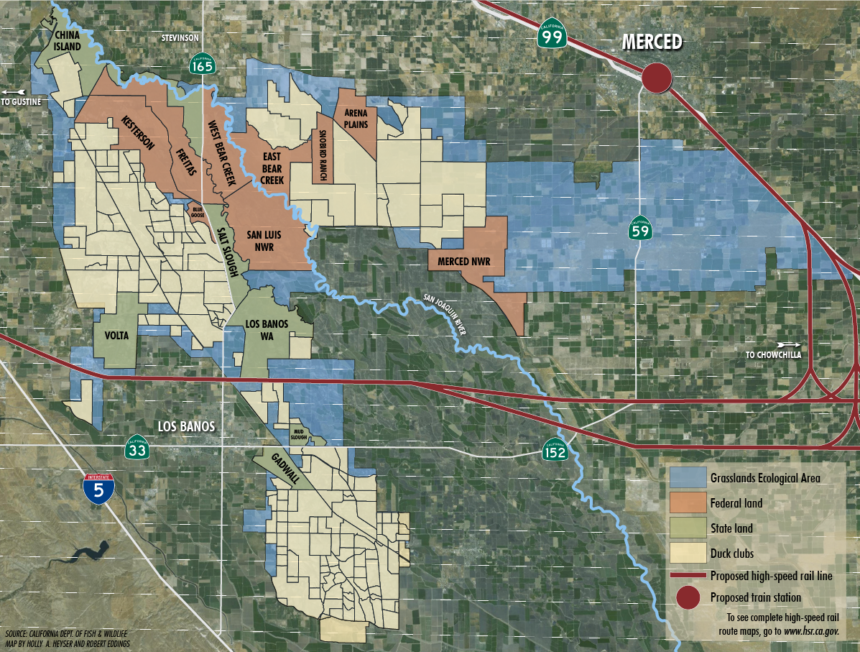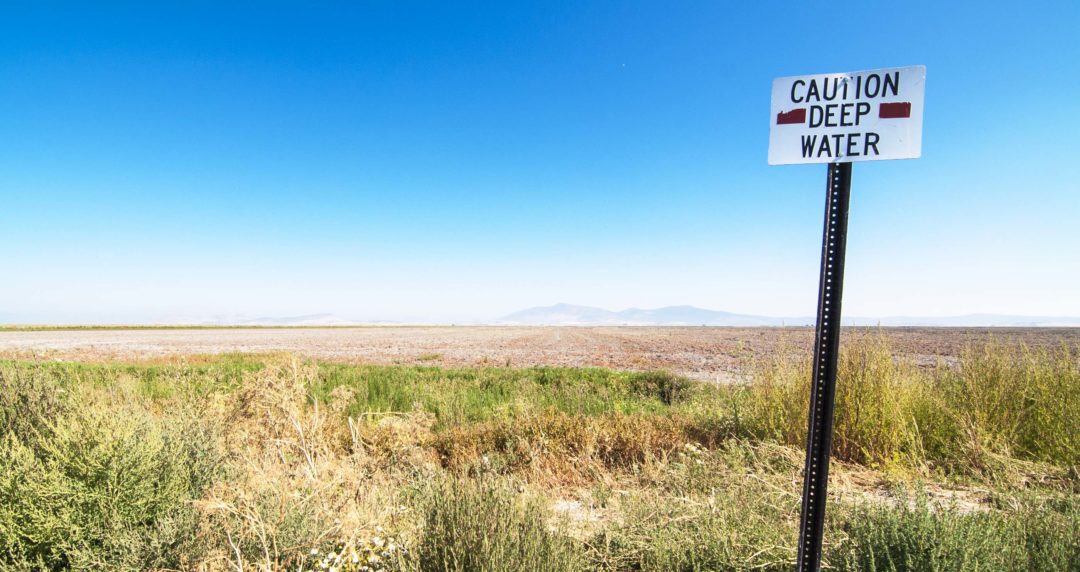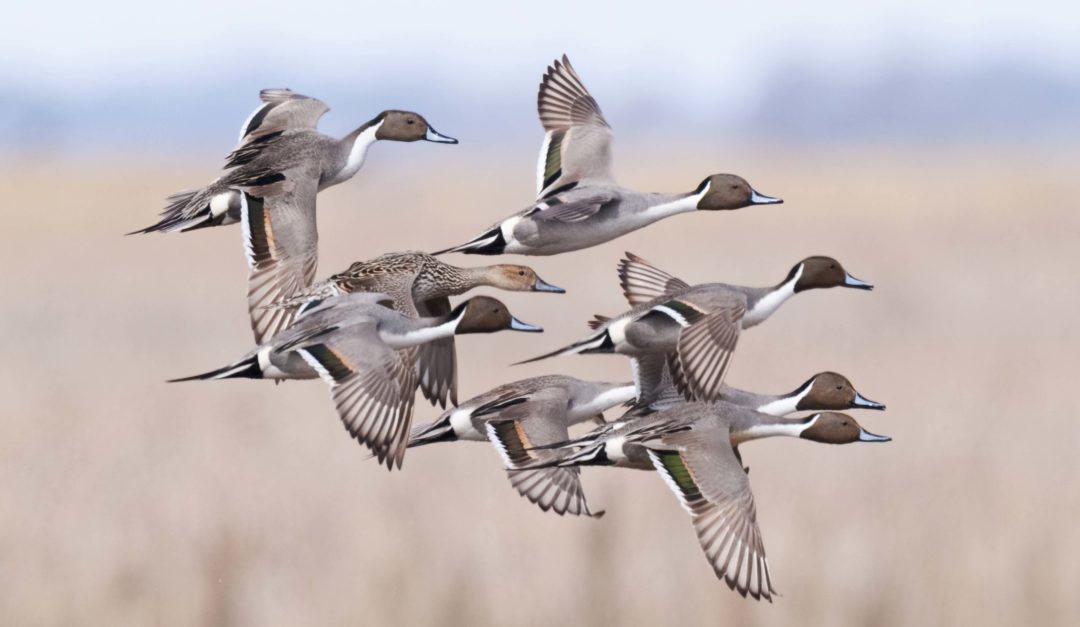California Waterfowl's advocacy team works on a variety of issues affecting waterfowl and waterfowl hunters at all times. Read about the issues here, and if you sign up for alerts, we'll let you know when it's critical for our members and supporters to contact their representatives.
CAPITOL INSIDER
We work on a lot of issues—use these links to skip to what interests you:
Waterfowl habitat
Wetland encroachment
Water
30 by 30
Hunting and fishing
Firearms and ammunition
Support letter for Pittman-Robertson Act
To see all legislative issues, click here.
Waterfowl habitat

California mallards
California's breeding population of mallards is in decline because of multiple problems with breeding habitat. The mallard harvest is in decline as a result, because 60-70% of mallards harvested here hatched here. Click here to learn more about the problem, and what CWA is doing about it.
Duck and pheasant breeding habitat fee
In 2021, the California Legislature passed CWA-sponsored AB 614 (Cecilia Aguiar-Curry, D-Winters), a bill that will add $10 to the state upland bird and waterfowl validations to give a much-needed boost to California's waterfowl and pheasant breeding populations, which are suffering habitat declines. The revenue will support the Nesting Bird Habitat Incentive Program, which was created by AB 2697 (James Gallagher, R-Yuba City ) in 2018, but not funded. The additional fee, supported by 74% of CWA supporters in a 2019 survey, was originally proposed at $5, but the Legislature chose to increase it to $10.
The incentive program can pay farmers and other landowners, including private duck clubs, to fallow, grow cover crops like vetch or enhance existing nesting habitat. It can potentially support CWA's innovative Delayed Wheat Harvest Incentive Program. Monies could also be used on state wildlife areas and national wildlife refuges to improve breeding habitat on those lands and thus increase public land hunter opportunity.
Federal Farm Bill
The 2018 Farm Bill passed, and it provides significant funding in the coming years for a number of conservation programs that will benefit waterfowl and sportsmen, including:
- The Voluntary Public Access and Habitat Incentive Program (VPA-HIP), which provides grants to state agencies to increase public access on private lands, particularly for hunting purposes. This program could provide significant funding for the California Department of Fish and Wildlife’s SHARE Program.
- The Environmental Quality Incentives Program (EQIP), which provides farmers financial assistance to implement a variety of conservation practices. This program could help support the Nesting Bird Habitat Incentive Program, which was created in 2018 through a CWA-sponsored bill (AB 2697 by James Gallagher, R-Yuba City) to create and enhance nesting habitat for mallards and pheasants on fallowed lands.
- The Regional Conservation Partnership Program (RCPP), which fosters partnerships with farmers, state agencies and nonprofit groups to implement conservation initiatives. RCPP could also help support California’s Nesting Bird Habitat Incentive Program.
- The Agricultural Conservation Easement Program (ACEP) supports the former Wetlands Reserve Program, which is used by many duck clubs that choose to protect their wetlands in perpetuity.
Over the last three years, CWA met with members of California’s delegation on numerous occasions to point out the waterfowl and wetland benefits of Farm Bill programs. But we especially applaud the significant efforts by our national waterfowl partners, Ducks Unlimited and Delta Waterfowl. Those efforts ensured a strong Farm Bill conservation title and significant funding for waterfowl interests across the U.S.
View our letter (PDF) here.
Humboldt aquaculture expansion: California Waterfowl, California Audubon and local hunters have fought an oyster farm expansion project for North Humboldt Bay because of its potential impacts on brant.
The California Coastal Commission rejected the Coast Seafood project expansion in 2017 and is working to minimize aquaculture impacts on brant and eelgrass. Additional projects are proposed by other interests, and California Waterfowl continues to monitor and comment on those proposals to ensure brant don't lose critical habitat.
The original proposal would have affected about 600 acres of bay and tidelands, including eelgrass beds that provide food and habitat for brant and other waterfowl. These areas are also used for waterfowl hunting, particularly sculling.
Federal waterfowl and wetland funding: CWA supported two key bills in 2020 that passed and were signed into law:
The America's Conservation Enhancement (ACE) Act – S. 3051 (Barrasso, R-WY) – includes an array of priority conservation provisions, including reauthorizing the North American Wetlands Conservation Act (NAWCA), and amending the Pittman-Robertson Wildlife Restoration Act to allow states greater flexibility in the use of funds to recruit and retain sportsmen and women. The bill enjoyed strongly bipartisan passage by the Environment and Public Works Committee and represents an important step forward in addressing growing challenges to species and habitat health. Click here to read our coalition letter of support (PDF), click here to read a coalition press release on House passage, and click here to read U.S. Rep. Mike Thompson's press release.
The Great American Outdoors Act – S. 3422 (Gardner, R-CO) – will provide $900 million annually to the Land and Water Conservation Fund (LWCF), which ensures protection of and access to irreplaceable lands while also supporting recreational facilities in communities across the country. It also includes up to $9.5 billion over five years to address priority repairs to infrastructure managed by the National Park Service, US Fish and Wildlife Service, US Forest Service, Bureau of Land Management and Bureau of Indian Education Schools. Click here for more information (PDF).
Wetland encroachment

Bullet train through the Grasslands: The California High-Speed Rail Authority wants to run a 225 mph bullet train through the heart of the Grasslands Ecological Area - the largest intact freshwater wetlands remaining in California. California Waterfowl supports the Grassland Water District's proposal to put the railroad be put underground. There has been no response from the state. Click here to read more (PDF).
Development on San Jacinto's doorstep: The Riverside County Board of Supervisors have approved a massive development next to the San Jacinto Wildlife Area despite the objections of California Waterfowl, the state Department of Fish and Wildlife and numerous advocates for the area. Click here to read more (PDF). Update: Riverside County adopted a general plan amendment that protected and buffered the wildlife area.
Water

Water for the Lower Klamath National Wildlife Refuge: One of California's critical waterfowl migration staging areas and breeding grounds is being starved of essential water supplies. But it's because of policy choices, not drought.
The issue is complex because there are many competing demands for available water in the region: farms, tribes, agriculture, endangered fish species and waterfowl. One potential solution that would have given Lower Klamath adequate water in nine out of every ten years was scuttled due to an impasse over whether dams on the Klamath River should be removed.
California Waterfowl's chief goals are to secure high-priority water rights for the refuge and to secure an agreement to distribute water equitably in the Klamath Basin. The latest updates and more detailed information can be found on our Save Lower Klamath page.
Sustainable Groundwater Management Act (SGMA): In 2014, the California Legislature passed a new Sustainable Groundwater Management Act requiring each groundwater basin in the state form a Groundwater Sustainability Agency and formulate a Groundwater Sustainability Plan. The idea is to prevent overdrafting of groundwater that has depleted aquifers, caused land subsidence, reduced water storage and reduced surface water supplies in certain basins.
The impact on duck clubs in overdrafted basins, particularly in the Tulare Basin, could be substantial.
Click here to learn more about the issue.
• Update 6-3-20: California Waterfowl's bill aimed at protecting managed wetlands in new state-required groundwater sustainability plans did not go forward, but CWA has not stopped fighting on behalf of wetlands, particularly in the threatened Tulare Basin. CWA sent a strongly-worded letter today to the state Department of Water Resources outlining the need to protect wetlands in the Semitropic Water Storage District. Semitropic's Groundwater Sustainability Plan ultimately calls for allowing so little water for managed wetlands that 72 percent of them would be lost. "California Waterfowl requests that DWR ... take into account the state's policy of 'no net loss' of wetlands when deciding whether to approve the water budgets set forth in the Semitropic GSP," CWA wrote. "Without the substitution of other affordable water sources, the water budgets required by 2040 would lead to the catastrophic loss of wetlands in the Tulare Basin." Click here to read the letter.
• Update: Duck clubs in the Semitropic Water Storage District in the Tulare Basin would get the same water allocation as ag interests - 4.2 acre feet per acre - under the district's updated Groundwater Sustainability Plan. While the plan still calls for ultimately reducing their allocation to 0.5 acre feet per acre - one-sixth what it normally takes to flood up - this decision is a helpful reprieve. Click here to read an article about this in the Spring 2020 issue of California Waterfowl Magazine.
Yolo Bypass Salmonid Habitat Restoration and Fish Passage
In recent years, scientists have discovered that threatened and endangered salmon thrive when they are allowed onto the historic floodplains. Using rice fields that are flooded in winter to decompose rice straw left standing after the harvest, scientists have shown juvenile salmon that spend time in shallow, warm water receive nutrition that is not available in the colder, deeper river. As a result, they grow much faster and have much higher survival rates than salmon that stay in the mainstream of the river.
For the most part, this “reactivation of the floodplain” is a very good thing. By helping salmon grow big enough to make it out to sea and then return, the concept could lead to recovery of the threatened and endangered runs of salmon. This provides benefits to the salmon fishery, as well as to rice farmers and flood protection agencies. Waterfowl also take advantage of the large amount of wetlands created and the nutritional values of those wetlands.
But a plan to flood the Yolo Bypass more often intentionally will end up reducing hunting opportunity in the bypass, and potentially reducing incentives for duck clubs to maintain waterfowl habitat. Click here to read more.
Sites Reservoir: California's water system is designed to push water out to sea during periods of heavy rainfall, squandering a valuable resource. The Sites Reservoir in the Sacramento Valley would capture and store this water, then make it available to managed wetlands throughout the valley in times of need. Click here to read an article (PDF).
Twin Tunnels: The Twin Tunnels project (formerly known as the Bay Delta Conservation Plan, now called WaterFix), is a controversial proposal to build two large tunnels under the Delta that would move water from the Sacramento River to south of the Delta. California Waterfowl is generally neutral on the WaterFix project, because while members north of the Delta generally oppose the Twin Tunnels, members south of the Delta would benefit from improved water supply and reliability. However, we have taken positions on any aspects that would affect waterfowl, wetlands and waterfowl hunters.
In addition, in May 2018, a "rider" was attached to the federal Department of Interior appropriations bill that would exempt the environmental documents for WaterFix from legal challenges at either the federal or the state level. The environmental documents list the identified impacts of the project and describe the ways the project will avoid or mitigate these impacts. If this information is faulty, it could affect waterfowl and also California Waterfowl's own properties. We believe exempting these documents from legal challenges is bad policy, sets a bad precedent and violates due process and state rights. Click here to read CWA's comments on the draft plan (PDF).
Bay-Delta Plan: The State Water Resources Control Board, which regulates water quality in the Sacramento-San Joaquin River Delta, is updating its Bay-Delta Plan. The update proposes to set “unimpaired flow” objectives for the Sacramento and San Joaquin rivers and tributaries including the Feather, Tuolumne, Stanislaus and Merced rivers. These flow requirements would last from February through June on the San Joaquin River and its tributaries, and would require the release of water from reservoirs to increase flows in the Delta. These releases would decrease the water supply for existing users on those rivers for the benefit of salmon and other endangered fish species.
California Waterfowl believes that the State Board’s goals for recovering fish populations would be better met through voluntary agreements that would provide functional flows that benefit salmon without harming other water uses. Science is increasingly showing that salmon gain the greatest benefit from time spent in the floodplain, including managed wetlands and rice fields, which you can read about here (PDF). A focus on the floodplain could benefit fish, waterfowl, other endangered species, and farmers, and would protect cities from flooding. Merely providing greater flows to the Delta has already been shown to not benefit fish and to waste water for other users. Click here to read CWA's comments on the plan update (PDF).
30 by 30
"30 by 30" is a nationwide movement to conserve 30% of lands and 30% of coastal waters by the year 2030. There was a bill in the Legislature in 2020 to codify that goal for California. CWA opposed the bill not because of the overarching policy goal, but rather to the details of its implementation and its potentially unintended consequences. Though some concerns were addressed with amendments to the bill, our two primary concerns were not:
- The bill’s sponsors rejected our request that AB 3030 expressly define what the bill meant by its use of the word “protect” – thus opening the door for sweeping closures to public access and hunting and other recreational opportunity on much of the lands which would be “protected” under the legislation.
- Although AB 3030 called out goals for the total percentage of our lands that should be “protected”, the bill failed to quantify the baseline of existing protections already in place.
The bill did not pass, but after the Legislature adjourned, the governor issued an executive order to accomplish much of what the bill set out to achieve, and the order explicitly stated that hunting organizations should be included in the process. Organizations, including CWA, are continuing to engage with the Secretary of Natural Resources on the matter.
CWA is also engaged at the national level with the 30 by 30 effort. Read our coalition comments to Interior Secretary Deb Haaland (PDF).
Hunting and fishing

Support letter for Pittman-Robertson Act: American Wildlife Conservation Partners signed on in early 2022 (PDF of letter) to collectively voice their support for the American System of Conservation Funding and the Pittman-Robertson Act. Both contributing to the most successful wildlife conservation framework in the world.
CCP Comments - San Luis NWR Complex: California Waterfowl Association (CWA) would like to take this opportunity to provide input on the draft Comprehensive Conservation Plan (CCP) for the San Luis National Wildlife Refuge (NWR) Complex. Specifically, our comments focus on proposed management activities that would increase and enhance hunting opportunities.
CWA is a 20,000-member nonprofit organization dedicated to the conservation of California’s waterfowl and wetland resources, and the protection and expansion of hunting.
Petition to ban bear hunting: The Humane Society of the United States petitioned the California Fish & Game Commission in late 2021 to put a moratorium on bear hunting. CWA is working closely with other hunting groups to oppose this misguided effort by animal rights groups, and we will continue to strongly support the hunting of ALL game species consistent with the best available science.
Anti-hunting petition: CWA joined 35 other hunting and conservation groups as part of American Wildlife Conservation Partners to oppose a petition by two environmental groups to the U.S. Department of Interior and U.S. Fish and Wildlife Service to effectively ban the import and export of wild game meat and game parts. Click here to read the letter we signed on to (PDF). If you click over to the petition, note that the proposed regulation begins on page 21 of 26. Press releases by the petitioners focus on the proposal to ban the import of live animals in the interest of preventing the spread of zoonotic diseases. But the petition clearly calls for a ban on importing all dead animals as well, including mallards and honkers that you hunt in Canada, and that routinely fly to the United States on their own.
Pintail seasons and limits: A growing body of research tells us that the current restrictive limits on northern pintail are not helping to restore the species to its 1970s abundance - it may be that the pintail population is as good as it can get given the impact of agricultural practices on its breeding grounds. CWA is working with the U.S. Fish and Wildlife Service to revise the model for setting pintail limits, with the goal of setting a daily limit of three or more. Click here to read more.
Hunting at Barrett Reservoir
In spring of 2020, the San Diego City Council was to consider closing hunting at Barrett Lake due to budget constraints - a proposal that CWA fought. Update: Hunting at the reservoir has been preserved.
Firearms and ammunition
California Waterfowl fought the following bills in the 2021 California Legislature:
Firearm and ammunition tax - DID NOT PASS
AB 1223 (Marc Levine, D-San Rafael): This bill would have imposed an excise tax on new handguns, semiautomatic rifles and semiautomatic shotguns, as well as on new and reloaded ammunition sold at retail, to fund the California Violence Intervention and Prevention Firearm and Ammunition Tax Fund. The excise tax of $25 per gun and an unspecified percentage for ammunition would be paid by retailers. A similar bill failed to pass in 2019. Click here to read our coalition letter of opposition (PDF).
Ban firearms/ammunition sales on state and county lands - AMENDED, PASSED AND SIGNED INTO LAW
SB 264 (Dave Min, D-Irvine) This bill would have prohibited allowing the sale of firearms, firearm precursor parts or ammunition on state or county property, but was amended to prohibit such sales at the Orange County Fair and Event Center in Costa Mesa. Read our coalition letter of opposition (PDF). Click here to read an article about the bill.


